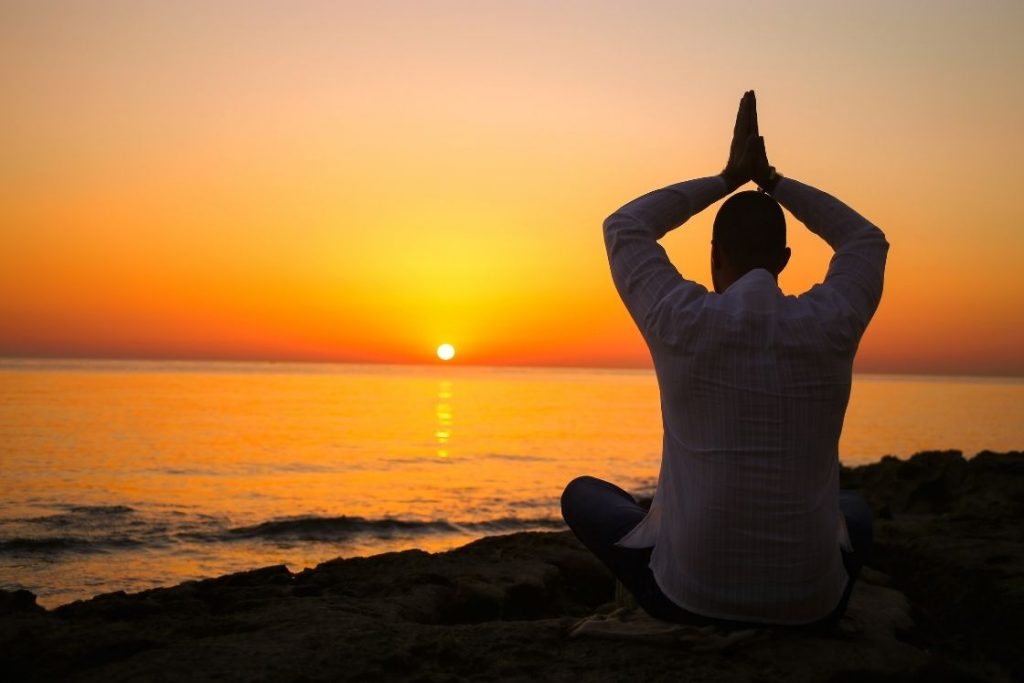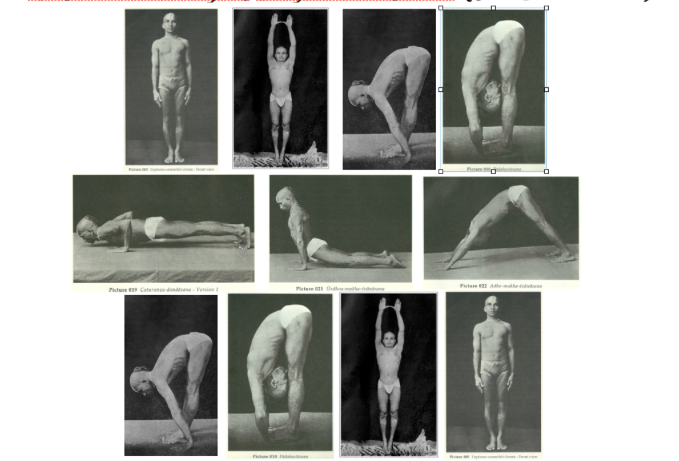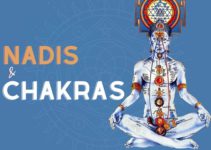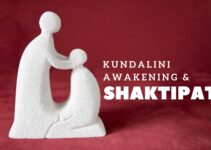
Surya Namaskar aka Sun Salutation refers to paying tribute to the Sun. The origin and history of Surya Namaskar are not quite clear. It is generally assumed that the practice has emerged from an early morning ritual of worshipping the Sun – the source of light and energy.
Surya Namaskar was not originally the way it looks today. Earlier, it was practiced as a prostration at the dawn infused with mantras and offering flowers, rice, and water to the Sun.
With time it has undergone several modifications and adaptations which eventually ended up making Surya Namaskar a full package for physical, mental, and spiritual well-being.
Origin and Etymology
The term Surya Namaskar stems out from Sanskrit, where “Surya” refers to the Sun and “Namaskar” means “greeting” or “salutation”. Surya Namaskar is a holistic amalgamation of physical, mental and spiritual practices that combines asana, pranayama, meditation, and mantra to make it complete Sadhana.
It is traditionally performed during the sunrise as worshipping the Lord Surya, hence the name.
It is believed that the practice of Surya Namaskar originated during the Vedic times and has been passed over several generations through Vedic sages.
Originally, there was no mention of Surya Namaskar In the Hatha Yoga texts. However, it somehow managed to find its way into yogic practices.
The mythology behind Sun Salutation

Sun is considered as the ultimate source of life and Hindus worship “Surya” as the God. The mythological tale behind the origin of this story came from an incident of Ramayana where Hanuman, as a kid, engulfed the Sun assuming it as a fruit.
Due to this behavior, Gods temporarily took away Hanuman’s supernormal powers. This outraged Vayu devata, Hanuman’s father and he threatened all the Gods. Due to this, they realized their mistake and agreed to bless Hanuman with special powers, all of which would be restored to him in the future when he would meet and serve Lord Rama.
However, the mother of Hanuman, Anjana was concerned about Hanuman’s education while he was growing up. She asked Hanuman to approach the Sun and appeal to him to get educated about the sacred scriptures. Initially, the Sun refused Hanuman’s request as he is constantly on the move. But, Hanuman assured him that he will keep pace with the Sun and learn meanwhile, thus Sun taught Hanuman all the sacred texts involving all the Vedas and Shastras.
After learning all about the sacred texts, Hanuman wished to pay “Guru Dakshina” (traditional fee for the teacher), but Surya refused. Therefore, Hanuman decided to express his gratitude by regularly practicing Surya Namaskar dedicating it to Lord Sun. This is how Surya Namaskar came into being.
Initially, people used to lay down in front of the Sun as prostration in the pilgrimage or gaze at the Sun directly for a few moments. Apart from the Hindu religion, the Buddhist group of Tibet and Burma also used to practice similar rituals as Surya Namaskar.
History of Surya Namaskar
The original practice from which Surya Namaskar might have originated is a collection of rituals, known as the Surya Narayana Pujas. It has been traced back 2,500 years ago.
However, there was no record of Surya Namaskar as a yoga practice in the early 20th century. 17th-century saint Samarth Ramdas is one of those earliest people who is associated with sun salutation practice. It is said that he used to do 1,200 Sun Salutations every day. He evolved this practice without stringing the proper movements into a sequence.
Bhawanrao Shriniwasrao Pant Pratinidhi, the ruler of Aundh (Present Pune, India) named this sequence as Surya Namaskar in his 1928 book, ‘The Ten-Point Way to Health: Surya Namaskar.’ The king never claimed that he invented the sequence, but tells that he used to practice it as a kid.
The anthropologist, Joseph Alter states that Surya Namaskar was not recorded in any Hatha Yoga text before the 19th century. The king of Aundh, Shriniwasrao Pant Pratinidhi popularized Surya Namaskar as an exercise to achieve ideal physical health. He also included it in the school curriculum and encouraged everyone to practice it on a daily basis.
Even with this information in hand, its involvement in the Hatha and Ashtanga Yoga remains unclear.

In early 1930, Krishnamacharya, the father of modern yoga was teaching yoga in Mysore. In the adjacent hall of his classroom, another teacher was also leading a physical instruction class of Surya Namaskar. Till then, the practice was neither well established nor combined together. It leads to a lot more debate and discussion about what is its exact procedure or which one is more authentic.
This debate branched the Surya Namaskar practice into different variations and every teacher developed a new sequence as per their convenience.
After Krishnamacharya, his disciples, K. Pattabhi Jois, Ashtanga Vinyasa creator and B.K.S. Iyenger, father of Iyenger yoga learned Surya Namaskar and progressed it into their styles of yoga.
In Ashtanga Vinyasa System, two variations of Surya Namaskar (Sun Salutation A and B) are present which do not share any similarity with Pratinidhi’s original sequence. However, it is something more vigorous and athletic.
Another variation of Surya Namaskar is available under Ghosh Lineage which incorporates 15-16 positions in contrast to 12 original steps. It forms an intermediate sequence by including push-ups and a few different poses, available in Dr. PS Das’s “Yoga Panacea”.
Surya Namaskar: Traditional ancient practice or a modern approach?
Though yoga is said to have its roots embedded in the ancient Indian traditions and Vedic texts. Similarly, Surya Namaskar has its origin described in Indian epics like the Ramayana. However, Surya Namaskar was never described under yoga during that time.
Another name that is associated with this debate is Mark Singleton, a yogic scholar. In his book Yoga Body: the Origins of Modern Posture Practice 2010, he clarified that during the Mysore practice when Surya Namaskar had been introduced to the yoga classes, still there was a differentiation between yoga practice and Surya Namaskar.
Over time, the Surya Namaskar was later classified under asanas and then practised as warm-up exercises before other yoga poses. The sequence was then widely accepted and expanded as Surya Namaskar A and B. Today, other some schools of yoga have other sets of it as well.
Therefore, Singleton’s suggestion was more inclined towards considering Sun salutations a modern development with European influences involving gymnastics and weight training. He also attributed Krishnamacharya for popularizing and introducing Surya Namaskar in the 1900s.
In contrast to this, yoga teachers, Jesal and Tejal highlight that there are several other practices similar to Sun Salutation in the Indian and South Asian culture. It includes traditional Indian wrestling, Bharatnatyam (classical Indian dance), prayer practices, and more.
This contradictory information again leaves the original topic of origin and history of Surya Namaskar as a vast and vague topic that needs exploration.
Conclusion
One thing that is similar among all the Sun salutations is their flow with the breath in continuous movement.
The widely practiced Surya Namaskar among most of the schools of yoga is the traditional Iyenger yoga sequence. The poses involved in it are practiced in the following order:
Pranamasana, Urdhva Hastasana, Uttanasana, Phalakasana (high plank), Chaturanga Dandasana, Urdhva Mukha Svanasana, Adho Mukha Svanasana, Uttanasana and back to Pranamasana.
In Ashtanga Vinyasa, both the sequences of Surya Namaskar A and B are suitable for beginner, intermediate, and advanced practitioners.
According to yogis, Surya Namaskar holds the utmost significance among all the yoga practices. “There is no Ashtanga yoga without Surya Namaskara, which is the ultimate salutation to the Sun god,” says K. Pattabhi Jois.




